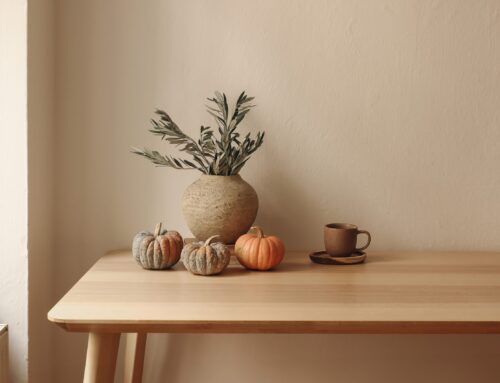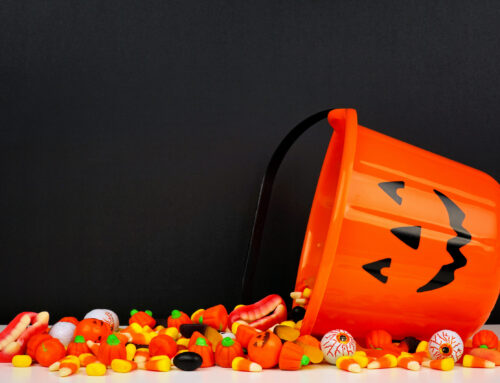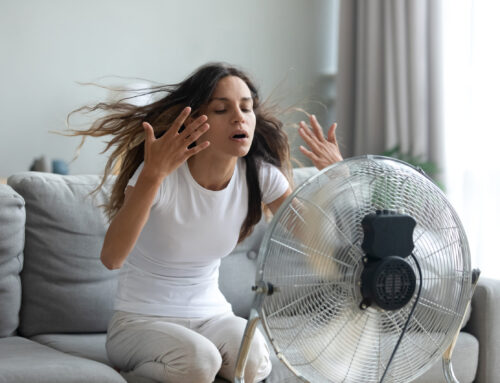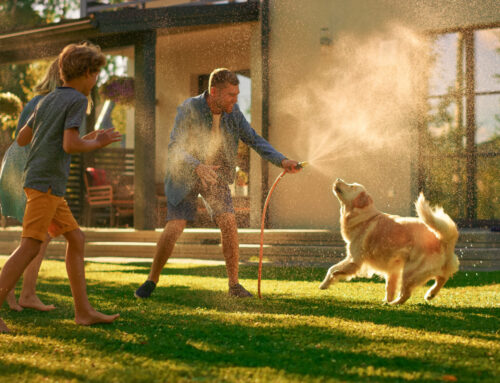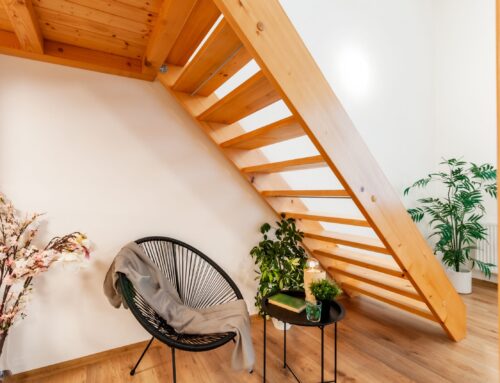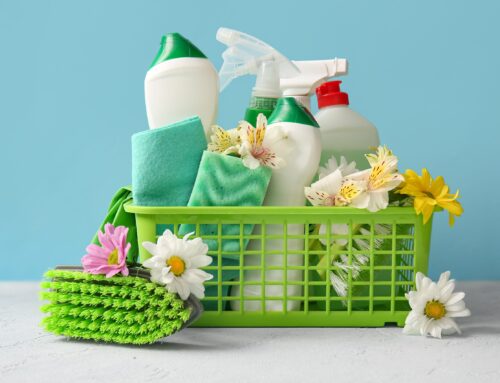
The Ultimate Guide to Cleaning Outdoor Furniture: Keep Your Patio BBQ-Ready Year After Year
Nothing beats a backyard BBQ with friends and family. But after months of exposure to sun, rain, and pollen, your patio furniture might be looking a little worse for wear. Before you fire up the grill, it’s time to give those chairs, cushions, and tables a refresh. With the right cleaning techniques, you can extend the life of your outdoor furniture and keep your backyard looking its best season after season. A little effort now can save you from costly replacements later, ensuring your patio remains inviting and comfortable. Plus, clean furniture is more enjoyable to use and helps create a welcoming space for guests.
Step 1: Gather Your Cleaning Supplies
Before diving into the scrubbing, make sure you have everything you need. Proper preparation makes cleaning easier and ensures you won’t need to stop mid-task to find a missing item. Organizing your supplies beforehand will help streamline the process, making it less of a chore and more of a quick refresh.
Here’s what you’ll need:
- Mild dish soap or an outdoor furniture cleaner—this helps break down grime without damaging surfaces.
- A bucket of warm water to dissolve dirt and make cleaning more effective.
- A soft-bristle brush or sponge to remove stains without scratching delicate finishes.
- A hose with a spray nozzle for thorough rinsing—pressure-controlled options work best to avoid damage.
- Microfiber cloths or towels for drying and buffing surfaces.
- White vinegar or baking soda for stubborn stains, which act as natural and eco-friendly cleaners.
- A protective furniture spray (optional) to guard against UV rays and weather damage.
Having everything within reach will make the job faster and more efficient. Consider setting up a small cleaning station outdoors to avoid tracking dirt into your home. A proactive approach to cleaning keeps your furniture in top shape with minimal effort over time.
Step 2: Cleaning Different Types of Outdoor Furniture
Not all patio furniture is created equal, and each material requires different care to keep it looking brand new. Understanding the proper techniques for each type ensures longevity and prevents unnecessary wear and tear.
Plastic or Resin Furniture
Plastic and resin furniture is durable but prone to discoloration over time, especially when exposed to the sun. UV rays can cause fading, while dirt and grime can lead to a dull, worn-out appearance. Regular cleaning will help maintain its vibrant color and finish.
To clean:
- Mix a few drops of dish soap into a bucket of warm water. Avoid harsh chemicals that can weaken the plastic.
- Use a sponge or soft brush to scrub away dirt and grime. Pay close attention to crevices where dirt accumulates.
- For tough stains, sprinkle baking soda onto a damp sponge and scrub gently. This method works well for stubborn marks without damaging the material.
- Rinse thoroughly with a hose, ensuring all soap is washed away. Leaving residue can cause streaking or attract more dirt.
- Allow the furniture to air dry completely before using. For added shine, apply a coat of outdoor-safe furniture polish.
Storing plastic furniture in a shaded area or covering it when not in use can help prevent fading and prolong its lifespan. If discoloration has already set in, a mild bleach solution (1 part bleach to 10 parts water) can help restore its original look—just be sure to rinse thoroughly.
Metal Furniture (Aluminum, Wrought Iron, or Steel)
Metal furniture is sturdy but can develop rust if not properly maintained. Regular upkeep will prevent oxidation and keep surfaces smooth and sleek.
- Wipe down furniture with soapy water and a sponge, focusing on areas prone to dirt buildup.
- For rust spots, use a paste of baking soda and water or a rust remover. Gently scrub with a soft brush to lift the rust without damaging the metal.
- Dry completely to prevent further rusting. Water exposure is the primary cause of metal degradation, so always ensure furniture is thoroughly dry.
- Apply a thin coat of car wax or furniture protectant to keep metal surfaces sleek and rust-free. This step adds a barrier against moisture and UV damage.
- Check for loose bolts or screws and tighten them regularly to keep furniture sturdy and safe.
If you live in a humid or coastal area, consider using a rust-resistant spray or keeping furniture covered when not in use. Investing in powder-coated metal furniture also helps prevent corrosion and extends longevity.
Wood Furniture (Teak, Cedar, or Pine)
Wood furniture adds a natural charm to your patio but requires extra care to prevent weather damage. Unlike plastic or metal, wood is more susceptible to moisture and temperature changes, which can lead to warping, cracking, or rotting.
- Use a soft brush and soapy water to scrub away dirt. Avoid using excessive water, as wood can absorb moisture and swell.
- Rinse lightly with a hose; avoid soaking the wood. Too much water exposure can weaken the structure and lead to splitting.
- For mildew stains, mix equal parts white vinegar and water, then scrub gently. Vinegar helps break down mold without harming the wood.
- Apply a wood sealant or oil to protect against moisture and sun damage. Teak oil works well to maintain a rich, warm finish and protect against drying out.
- Regularly inspect for signs of wear, such as splintering or cracks, and sand rough areas as needed.
Storing wooden furniture indoors during winter or covering it with a breathable tarp helps prolong its beauty and durability. If your furniture starts to look weathered, light sanding and a fresh coat of sealant can bring it back to life.
Wicker Furniture
Wicker is beautiful but tricky to clean because of all the nooks and crannies. Dust and dirt can accumulate quickly, making regular upkeep essential.
- Use a vacuum or dry brush to remove loose dirt. A handheld vacuum with a brush attachment works wonders.
- Mix a small amount of dish soap with warm water and wipe down surfaces with a sponge. Be gentle to avoid damaging woven fibers.
- Avoid over-wetting the wicker to prevent damage. Excessive moisture can weaken the weave and lead to unraveling.
- Let it dry in a shaded, well-ventilated area. Direct sunlight can cause wicker to become brittle over time.
- Consider applying a UV-resistant spray to prevent fading and extend its lifespan.
If natural wicker starts to fray or loosen, using a small amount of wood glue can help secure any loose strands. For synthetic wicker, occasional polishing with a furniture-safe oil can help maintain its shine and flexibility.
Step 3: Freshening Up Outdoor Cushions
Outdoor cushions make your patio space comfortable, but they also collect dirt, pollen, and mildew. Proper cleaning keeps them looking fresh and prolongs their lifespan.
- Remove the covers if they’re machine washable and launder according to the instructions. Be sure to check for any special fabric requirements before washing.
- If covers are not removable, mix warm water with a mild detergent and scrub gently using a soft brush.
- Treat mildew with a solution of one part white vinegar to three parts water. This natural solution is effective without being too harsh.
- Rinse thoroughly and allow cushions to dry completely in the sun to prevent mold growth. Placing them on a raised drying rack helps air circulate for faster drying.
- Consider using a fabric protectant to repel stains and water. These sprays create a barrier against spills, extending the life of your cushions.
Storing cushions in a weatherproof storage box when not in use prevents unnecessary exposure to moisture and sun, keeping them looking new for longer.
Step 4: Cleaning Patio Umbrellas and Canopies
Patio umbrellas and awnings provide much-needed shade during warm months but can accumulate dust, mold, and bird droppings over time. Since these fabric coverings are constantly exposed to the elements, they require regular maintenance to stay fresh and functional. If left unchecked, mildew and dirt can cause discoloration and weaken the fabric, leading to premature wear and tear.
To clean:
- Open the umbrella fully to make cleaning easier.
- Brush off loose dirt and debris using a handheld broom or a dry cloth.
- Mix mild dish soap with warm water in a bucket.
- Use a soft-bristle brush to scrub the fabric, paying extra attention to stained areas.
- Rinse thoroughly with a hose, ensuring all soap is washed away to prevent streaking.
- Allow the umbrella to dry completely in direct sunlight before closing it. Closing a damp umbrella can cause mold and mildew growth.
- Apply a UV fabric protector to extend its lifespan and prevent fading from the sun.
For stubborn stains, mix one part white vinegar with three parts water and spot-clean the affected areas. If mildew is present, a small amount of hydrogen peroxide can help lift it. When storing the umbrella during the off-season, make sure it’s completely dry and use a protective cover to prevent dust buildup.
Step 5: Sweeping and Washing the Patio or Deck
Your freshly cleaned furniture will look even better on a spotless patio! A well-maintained deck or patio enhances the overall appearance of your outdoor space and prevents dirt from being tracked onto furniture. Regular sweeping and washing can also prevent mold, moss, or algae from forming, which can create a slippery surface.
Here’s how to clean your outdoor flooring:
- Sweep first – Remove leaves, dirt, and debris using a broom or a leaf blower. Pay attention to corners where dirt accumulates.
- Hose it down – Use a garden hose with a spray nozzle to rinse off surface dust.
- Scrub with soap – Mix a mild detergent with warm water and use a stiff brush to scrub the patio or deck. For tough stains, a mix of baking soda and water can help lift grime.
- Power wash (if needed) – If dirt buildup is excessive, consider using a power washer. Be cautious with wooden decks, as high pressure can damage the wood grain.
- Rinse well – Ensure all soap and residue are washed away to avoid slippery surfaces.
- Let it dry – Allow the patio to dry fully before replacing furniture to prevent moisture from getting trapped underneath.
For wood decks, applying a sealant annually will help protect against water damage and extend the deck’s lifespan. Concrete patios can benefit from occasional resealing to prevent cracks and staining.
Bonus Tips to Keep Outdoor Furniture Looking New
Once your furniture and patio are clean, you’ll want to keep them in top shape for as long as possible. Here are some additional maintenance tips to ensure your outdoor space stays BBQ-ready:
- Invest in Covers: Use furniture covers when not in use to shield against dust, dirt, and harsh weather conditions. Waterproof covers are particularly helpful during rainy seasons.
- Store During Harsh Weather: If possible, move lightweight furniture, cushions, and umbrellas into a shed or garage during winter to prolong their lifespan.
- Regular Maintenance: Wipe down furniture weekly to prevent dirt buildup. A quick wipe with a damp cloth can go a long way in keeping your pieces looking fresh.
- Reapply Protective Coatings: Refresh sealants, rust protectants, and UV sprays as needed to maintain durability. A protective coat of car wax on metal surfaces can prevent oxidation and rust.
- Rotate Cushions: Flipping and rotating cushions regularly helps them wear evenly and prevents sun fading on one side.
- Trim Nearby Foliage: If trees and plants are close to your patio, trim them regularly to minimize debris and pollen buildup on furniture.
- Address Stains Immediately: The longer stains sit, the harder they are to remove. Keep a spray bottle of soapy water handy to quickly clean up spills and bird droppings before they set in.
Get Ready to Enjoy Your Sparkling Clean Patio!
With a little elbow grease, your outdoor furniture can look brand new for every backyard BBQ, family gathering, or peaceful evening outdoors. By following these cleaning and maintenance steps, you’ll keep your patio space inviting and ready for every season. Whether you’re relaxing with a book, entertaining guests, or having a family cookout, a well-kept outdoor area makes the experience even more enjoyable.
Now, fire up that grill, invite your favorite people over, and enjoy your spotless backyard retreat!
Share this article
Follow us
A quick overview of the topics covered in this article.
- Step 1: Gather Your Cleaning Supplies
- Step 2: Cleaning Different Types of Outdoor Furniture
- Step 3: Freshening Up Outdoor Cushions
- Step 4: Cleaning Patio Umbrellas and Canopies
- Step 5: Sweeping and Washing the Patio or Deck
- Bonus Tips to Keep Outdoor Furniture Looking New
- Get Ready to Enjoy Your Sparkling Clean Patio!

